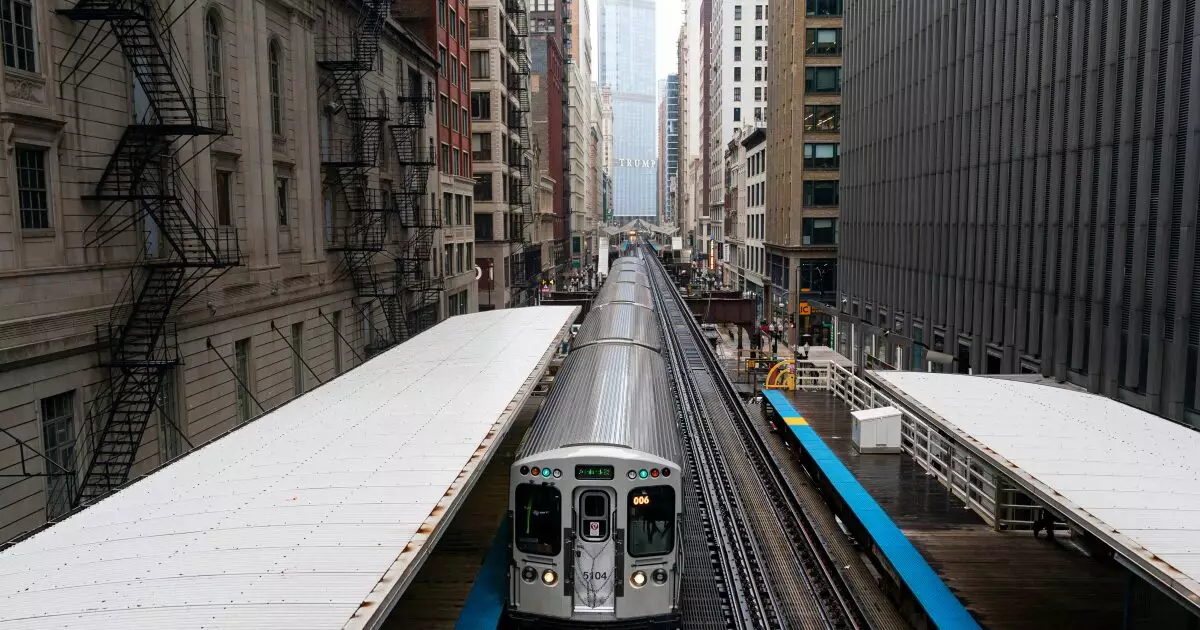The Chicago Transit Authority (CTA) is experiencing troubling times, as evidenced by Moody’s recent decision to downgrade its outlook from stable to negative, while maintaining its A1 rating on the agency’s $1.9 billion in senior lien sales tax bonds. This development should raise alarm bells not only for those who depend on the CTA’s services but also for any stakeholders considering the long-term viability of public transportation in Chicago. Sadly, unless substantial changes occur, the CTA is teetering on the edge of having its operational stability questionable, which could spell disaster for thousands of daily commuters.
A major concern highlighted by Moody’s is the potential operational deficit projected at a staggering $550 million by fiscal 2026, accounting for 25% of the CTA’s operational budget. This figure underscores the seriousness of the current financial crisis. In light of this, the agency intends to keep afloat in the immediate term by depleting its federal pandemic relief funds. This reliance on temporary funding is not merely short-sighted; it showcases a deeper systemic issue regarding the CTA’s financial planning and governance.
The Complexity of Funding Solutions
Moody’s positions that merely raising fares or slashing expenses won’t suffice to bridge this colossal budget gap. The agency is urging the necessity for more profound systemic action, specifically through either new or expanded tax measures or further state aid. This claim raises a significant question: Why is there a pervasive stagnation in state-level funding for public transportation, especially when transit systems across the U.S. are increasingly reliant on state support post-pandemic?
The discussions in Springfield about new revenue streams tied to governance reforms appear promising but raise skepticism. Lawmakers have proposed eliminating existing transit boards and establishing a new Metropolitan Mobility Authority. However, this idea has already met resistance from transit agency heads who fear that such drastic changes will further complicate already convoluted governance structures. The Regional Transportation Authority (RTA) has even countered this approach, advocating for greater control over operational funding and fare policy. The entire scenario feels like a bureaucratic gridlock, echoing the classic dysfunction often seen in public sector operations.
The Role of Ridership Trends
While it’s encouraging to note that CTA ridership is slowly rebounding from the pandemic’s plummeting numbers, it still doesn’t equate to a solid financial foundation. Moody’s has pointed out that fare revenues are unlikely to resolve the CTA’s financial woes anytime soon. This reliance on a slow recovery in public demand for transit underscores a deeper societal issue: the increasing challenges faced by urban public transportation systems that often find themselves subjected to various external pressures, from remote work trends to increased personal vehicle usage.
The lack of innovative approaches to attract ridership is concerning. Many systems that historically relied on fare revenues have fared better in uncertain economic climates, partly because they had diversified funding sources. The CTA’s path forward appears bleak without bold initiatives to improve service and attract riders in an increasingly competitive transportation landscape. As we watch the rise of rideshare and other on-demand transportation options, the CTA risks becoming a relic of a less favorable past.
Grappling with Long-Term Liabilities
The long-term liabilities associated with the CTA compound the agency’s challenges significantly. Moody’s points out that without additional state support, the CTA may face a downgrade in its rating. The rising long-term liabilities and the liquidity situation, with less than 40 days of operating expenses, serve as stark reminders that the CTA is under immense financial pressure.
It’s essential for both state lawmakers and CTA administrators to understand that the current predicament isn’t merely a budgetary hiccup; it’s a precursor to a much larger systemic failure that could lead to service cuts and diminished consumer trust. As a city that prides itself on its rich history of public service and accessibility, we cannot afford to overlook the challenges that threaten to unravel decades of progress. Strategies for revitalizing public transportation need to prioritize fiscal responsibility while also fostering a renewed emphasis on the environmental and social imperatives of public transit systems.
The time for complacency is past; only decisive, forward-thinking actions can prevent an impending operational crisis for the CTA. Equally, it is crucial for Chicago’s legislative leaders to stand firm in their resolve to provide sustainable support for this critical service, understanding that the future of urban transportation hangs in the balance.

